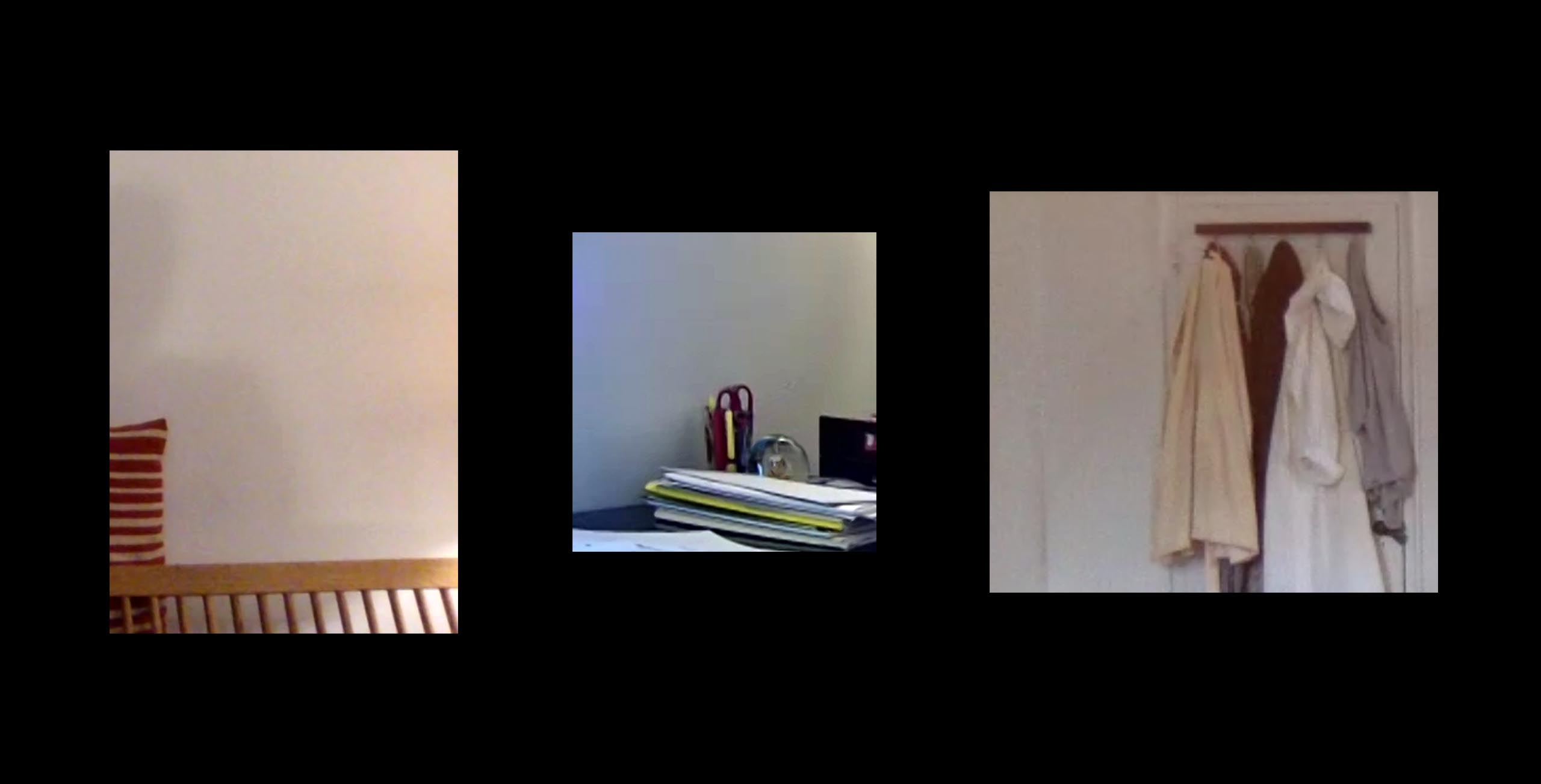
“Other People’s Houses” is a new book by Gordon Hall published by A.I.R. in collaboration with Walls Divide Press commissioned for The Scalability Project. Through their practice, Hall examines the sociopolitical dynamics that arise in the bonds we develop with ourselves, objects, and each other through sculpture, performance, and writings, raising questions about the parables of the relational, personal, and political. “Other People’s Houses” continues this exploration and consists of images taken by screengrabs of the domestic interiors behind people present with Hall in Zoom meetings during the early months of 2020, followed by a short text in which they describe their interest in capturing these tender and voyeuristic images. The PDF of “Other People’s Houses” is available to read through The Scalability Project website.
The hardcopy of the publication will be for sale through the A.I.R. website and the proceeds from the sales will be donated to Project EATS— a neighborhood-based project that uses art, urban agriculture, partnerships, and social enterprise to sustainably produce and equitably distribute essential resources within and between communities in New York; especially those where people live on working-class and low-incomes. To do this, Project EATS brings diverse neighbors together to take agency over the use of land in their neighborhood, provide the infrastructures and support for a community to develop their resources into productive spaces.
On February 13th at 4pm we will launch the publication with a live reading event on Zoom, in which readers and people from the audience will share a piece that sparks conversation around the feminist politics of the pandemic. Taking “Other People’s Houses” as a point of departure, the events approach to the subject matter is open and expansive. Following the premise of the publication the readers will explore the feminist implications of the collapsing of the spaces of work and home, and the way this spatial non-differentiation brings renewed reflections, both critical and hopeful on the relation between the personal and the political. Nikita Gale, Terry Kapsalis, JoAnne McFarland, Xiomara Sebastián Castro Niculescu, Aliza Shvarts and Ada Potter will join us for live readings.
To register for the event, please click here.
You can view “Other People’s Houses” here.
To purchase the hardcopy of the publication, please click here.
Gordon Hall is an artist based in New York who makes sculptures and performances. Hall has had solo presentations at the MIT List Visual Arts Center, The Portland Institute for Contemporary Art, The Renaissance Society, EMPAC, and Temple Contemporary, and has been in group exhibitions at The Whitney Museum of American Art, The Brooklyn Museum, The Hessel Museum, Art in General, White Columns, Socrates Sculpture Park, among many other venues. Hall’s writing and interviews have been published widely including in Art Journal, Artforum, Art in America, and Bomb, as well as in Walker Art Center’s Artist Op-Ed Series, What About Power? Inquiries Into Contemporary Sculpture (published by SculptureCenter), Documents of Contemporary Art: Queer (published by Whitechapel and MIT Press,), and Theorizing Visual Studies (Routledge). A volume of Hall’s collected essays, interviews, and performance scripts was published by Portland Institute for Contemporary Art in 2019. Gordon Hall was a 2019-2020 Provost Teaching Fellow in the Department of Sculpture at RISD and will be 2021 resident faculty at the Skowhegan School of Painting and Sculpture. Gordon Hall is represented by DOCUMENT. http://gordonhall.net/
Full CV and narrative bio is always updated here: http://gordonhall.net/?q=CV
Anna L. Tsing, The Mushroom at the End of the World, 2015↩
Le Guin positions the container, rather than the spear, as the first human tool, following the writings of Elizabeth Fisher. Ursula K. Le Guin, The Carrier Bag Theory of Fiction, 1986↩
In “On Non-Scalability,” Tsing establishes that a primary critique of scalable frameworks is of their inability to maintain diversity. Taking that intrinsic flaw into account, we aim to not promote the amplification of a singular feminist framework. Anna L. Tsing, “On Non-Scalability,” 2012↩
In an interview with Jorge Cotte, Wendy Hui Kyong Chun states, “Every form of communication is based on a fundamental leakiness.” These leaks can be seen as moments of possibility. Wendy Chun, “Reimagining Networks,” The New Inquiry, 2020↩
Anna L. Tsing, The Mushroom at the End of the World, 2015; Anna L. Tsing, Roxana Fabius, Patricia M. Hernandez, Mindy Seu, “Big histories are always best told through insistent, if humble, details,” The Scalability Project, A.I.R. Gallery, 2020↩
In Glitch Feminism, Legacy Russell sees the glitch as a catalyst rather than an error, a “correction to the machine.” Legacy Russell, “Digital Dualism And The Glitch Feminism Manifesto,” Cyborgology, 2012↩
Here we are drawing from Judy Wajcman’s definition of interpretive flexibility. Wajcman describes technology’s malleable character, emphasizing that there is nothing inevitable about the way technologies evolve. Users have the power to radically alter technologies’ meanings and deployment. Judy Wajcman, TechnoFeminism p.37↩